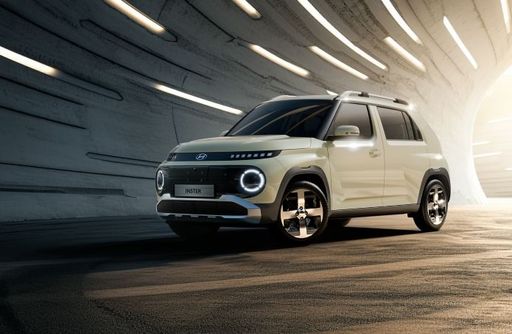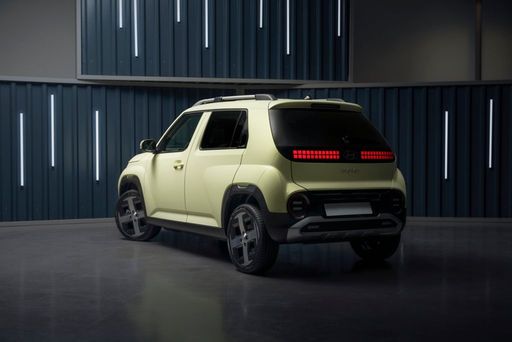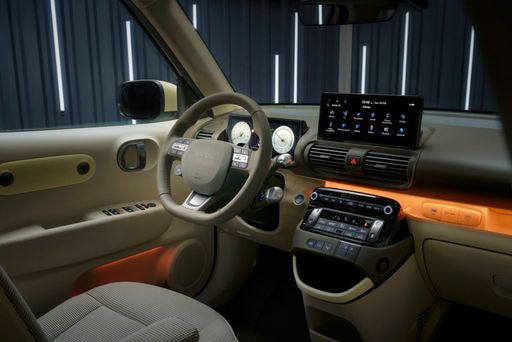Hyundai Inster vs Kia EV5 – Which one offers the better deal?
Two cars, one duel: Hyundai Inster meets Kia EV5.
Which one wins in performance, efficiency and value for money? Find out now!
Costs and Efficiency: When it comes to price and running costs, the biggest differences usually appear. This is often where you see which car fits your budget better in the long run.
Hyundai Inster has a significantly advantage in terms of price – it starts at 20500 £, while the Kia EV5 costs 39400 £. That’s a price difference of around 18935 £.
In terms of energy consumption, the advantage goes to the Hyundai Inster: with 14.30 kWh per 100 km, it’s slightly more efficient than the Kia EV5 with 16.90 kWh. That’s a difference of about 2.60 kWh.
As for range, the Kia EV5 performs distinct better – achieving up to 530 km, about 160 km more than the Hyundai Inster.
Engine and Performance: Power, torque and acceleration are the classic benchmarks for car enthusiasts – and here, some clear differences start to show.
When it comes to engine power, the Kia EV5 has a convincingly edge – offering 218 HP compared to 115 HP. That’s roughly 103 HP more horsepower.
In acceleration from 0 to 100 km/h, the Kia EV5 is clearly perceptible quicker – completing the sprint in 8.40 s, while the Hyundai Inster takes 10.60 s. That’s about 2.20 s faster.
In terms of top speed, the Kia EV5 performs minimal better – reaching 165 km/h, while the Hyundai Inster tops out at 150 km/h. The difference is around 15 km/h.
There’s also a difference in torque: Kia EV5 pulls clearly stronger with 295 Nm compared to 147 Nm. That’s about 148 Nm difference.
Space and Everyday Use: Beyond pure performance, interior space and usability matter most in daily life. This is where you see which car is more practical and versatile.
Seats: Kia EV5 offers slightly more seating capacity – 5 vs 4.
In curb weight, Hyundai Inster is significantly lighter – 1380 kg compared to 2069 kg. The difference is around 689 kg.
In terms of boot space, the Kia EV5 offers decisively more room – 566 L compared to 280 L. That’s a difference of about 286 L.
In maximum load capacity, the Kia EV5 performs evident better – up to 1650 L, which is about 591 L more than the Hyundai Inster.
When it comes to payload, Kia EV5 distinct takes the win – 511 kg compared to 357 kg. That’s a difference of about 154 kg.
Who comes out on top?
Overall, the Kia EV5 shows itself to be dominates this comparison and secures the title of DriveDuel Champion.
It convinces with the more balanced overall package and proves to be the more versatile choice for everyday use.
Kia EV5
Hyundai Inster
The Inster has quickly captured the attention of automotive enthusiasts with its striking design and dynamic performance. This model seamlessly blends advanced technology with comfort, making it an ideal choice for both daily commutes and adventurous road trips. With its spacious interior and innovative features, the Inster promises an exhilarating driving experience that doesn’t compromise on practicality.
details @ hyundai.news
@ hyundai.news
 @ hyundai.news
@ hyundai.news
 @ hyundai.news
@ hyundai.news
Kia EV5
Kia's EV5 is an exciting entry into the electric SUV market, showcasing the brand's commitment to sustainable mobility. With its modern design and advanced technology features, the EV5 promises to deliver a smooth and environmentally friendly driving experience. The interior offers a spacious and comfortable ride, making it an appealing choice for families and eco-conscious drivers alike.
details

|
|
|
|
|
Costs and Consumption |
|
|---|---|
|
Price
20500 - 25800 £
|
Price
39400 - 45400 £
|
|
Consumption L/100km
-
|
Consumption L/100km
-
|
|
Consumption kWh/100km
14.3 - 15.1 kWh
|
Consumption kWh/100km
16.9 - 17.8 kWh
|
|
Electric Range
327 - 370 km
|
Electric Range
505 - 530 km
|
|
Battery Capacity
42 - 49 kWh
|
Battery Capacity
81.40 kWh
|
|
co2
0 g/km
|
co2
0 g/km
|
|
Fuel tank capacity
-
|
Fuel tank capacity
-
|
Dimensions and Body |
|
|---|---|
|
Body Type
SUV
|
Body Type
SUV
|
|
Seats
4
|
Seats
5
|
|
Doors
5
|
Doors
5
|
|
Curb weight
1380 - 1433 kg
|
Curb weight
2069 kg
|
|
Trunk capacity
238 - 280 L
|
Trunk capacity
566 L
|
|
Length
3825 - 3845 mm
|
Length
4610 mm
|
|
Width
1610 mm
|
Width
1875 mm
|
|
Height
1575 - 1610 mm
|
Height
1675 mm
|
|
Max trunk capacity
1059 L
|
Max trunk capacity
1650 L
|
|
Payload
317 - 357 kg
|
Payload
511 kg
|
Engine and Performance |
|
|---|---|
|
Engine Type
Electric
|
Engine Type
Electric
|
|
Transmission
Automatic
|
Transmission
Automatic
|
|
Transmission Detail
Reduction Gearbox
|
Transmission Detail
Reduction Gearbox
|
|
Drive Type
Front-Wheel Drive
|
Drive Type
Front-Wheel Drive
|
|
Power HP
97 - 115 HP
|
Power HP
218 HP
|
|
Acceleration 0-100km/h
10.6 - 11.7 s
|
Acceleration 0-100km/h
8.40 s
|
|
Max Speed
140 - 150 km/h
|
Max Speed
165 km/h
|
|
Torque
147 Nm
|
Torque
295 Nm
|
|
Number of Cylinders
-
|
Number of Cylinders
-
|
|
Power kW
71 - 85 kW
|
Power kW
160 kW
|
|
Engine capacity
-
|
Engine capacity
-
|
General |
|
|---|---|
|
Model Year
2025
|
Model Year
2025
|
|
CO2 Efficiency Class
A
|
CO2 Efficiency Class
A
|
|
Brand
Hyundai
|
Brand
Kia
|
What drivetrain options does the Hyundai Inster have?
Available configurations include Front-Wheel Drive.
The prices and data displayed are estimates based on German list prices and may vary by country. This information is not legally binding.
